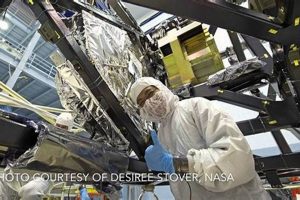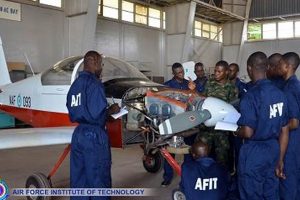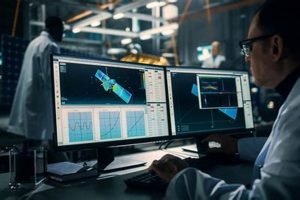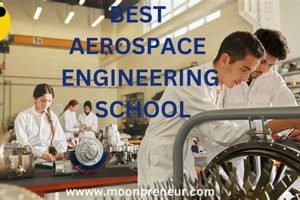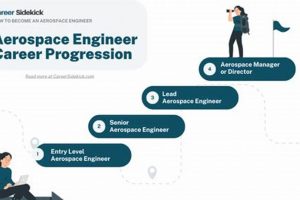Aerospace engineering and computer engineering represent distinct yet vital branches of modern engineering. The former focuses on the design, development, and testing of aircraft, spacecraft, and related systems, while the latter concentrates on the design, development, and testing of computer systems, software, and networks. One deals primarily with physical systems operating in atmospheric and extraterrestrial environments, whereas the other concerns itself with information processing and the architecture underpinning digital devices.
The significance of both disciplines is substantial. Aerospace advancements enable global travel, satellite communication, and space exploration, pushing the boundaries of human knowledge and capability. Computer engineering fuels technological innovation across virtually all sectors, from healthcare and finance to entertainment and manufacturing. Their historical trajectories reflect parallel advancements in materials science, electronics, and control systems, each evolving to meet increasingly complex societal demands.
A comparative exploration reveals key differences in educational pathways, required skill sets, and career opportunities. Examining these contrasting facets provides valuable insight for students considering their future academic and professional pursuits.
Selecting an engineering discipline demands careful consideration of individual aptitudes and career aspirations. Evaluating key aspects of both fields provides a framework for informed decision-making.
Tip 1: Assess Foundational Interests: Determine whether an aptitude for physics, mechanics, and materials science aligns more closely with aerospace principles, or if an inclination towards mathematics, logic, and algorithm design favors computer engineering.
Tip 2: Evaluate Core Curriculum: Research the typical undergraduate curriculum for each discipline. Aerospace programs emphasize aerodynamics, propulsion, and structural analysis. Computer programs focus on programming, data structures, and digital logic design.
Tip 3: Research Career Trajectories: Investigate potential career paths. Aerospace engineers may work on aircraft design, satellite development, or mission planning. Computer engineers find roles in software development, hardware design, or network security.
Tip 4: Explore Specialization Options: Consider areas of specialization. Aerospace offers options such as astronautical engineering or aeronautical engineering. Computer provides opportunities in artificial intelligence, cybersecurity, or embedded systems.
Tip 5: Analyze Industry Trends: Understand current industry trends. The aerospace sector is experiencing growth in commercial spaceflight and sustainable aviation. Computer is evolving with advancements in cloud computing, machine learning, and quantum computing.
Tip 6: Investigate Internship Opportunities: Seek internships in relevant industries. Practical experience provides valuable insight into the day-to-day realities of each profession.
Tip 7: Consider Long-Term Job Market Outlook: Review employment projections for both fields. Understanding projected job growth and salary expectations aids in long-term career planning.
Careful evaluation of these factors allows prospective students to make a well-informed choice, maximizing their potential for success and satisfaction in their chosen engineering field.
Moving forward, further exploration into specific skill requirements and technological advancements will be beneficial.
1. Physical vs. Digital
The distinction between physical and digital domains is fundamental to differentiating aerospace and computer. Aerospace engineering confronts challenges rooted in the physical world: aerodynamic forces, structural integrity under stress, and propulsion systems operating in extreme conditions. This necessitates a deep understanding of physics, material science, and thermodynamics. The design process is inextricably linked to physical prototypes and extensive testing in environments replicating real-world conditions, such as wind tunnels and flight tests. For example, designing an aircraft wing requires meticulous calculations of lift and drag, followed by physical construction and rigorous testing to validate performance.
Computer engineering, in contrast, operates primarily within the digital realm. It involves the design, development, and implementation of computer hardware and software systems. The focus shifts to logic gates, algorithms, data structures, and programming languages. While physical hardware is essential, the core challenges revolve around manipulating and processing information efficiently and reliably. Consider the development of an operating system; the engineer focuses on optimizing memory management, scheduling processes, and ensuring data security, all within the abstract digital landscape.
The physical vs. digital dichotomy profoundly impacts the skillsets and tools employed. Aerospace engineers rely on computational fluid dynamics software, finite element analysis, and CAD/CAM systems for design and simulation. Computer engineers utilize integrated development environments, debugging tools, and hardware description languages. Although both disciplines may employ computational methods, the underlying principles and applications differ significantly. Recognizing this core distinction is crucial for students selecting their engineering specialization, as it directly correlates with the nature of the problems they will encounter and the solutions they will devise.
2. Atmosphere vs. Architecture
The “Atmosphere vs. Architecture” contrast highlights a fundamental divergence in the operational context and design constraints faced by aerospace and computer. In aerospace, the atmosphere represents a dynamic and often hostile environment that directly influences vehicle performance and safety. Atmospheric pressure, temperature, wind shear, and precipitation are all critical factors in aircraft design, flight planning, and mission execution. For example, the design of an aircraft wing must account for changes in air density with altitude, ensuring adequate lift throughout the flight envelope. Similarly, spacecraft design must consider the vacuum of space, extreme temperature variations, and the effects of radiation. Therefore, a comprehensive understanding of atmospheric science and its impact on vehicle dynamics is paramount.
In contrast, computer engineering focuses on the architecture of computational systems, both hardware and software. Architecture encompasses the organization, structure, and interrelationships of components within a computer system. Considerations include processor design, memory management, network topology, and software frameworks. The focus is on creating efficient, reliable, and secure systems that can process information effectively. While environmental factors such as temperature and humidity can impact hardware performance, the primary concern is the logical and functional organization of the system. For instance, the architecture of a data center must consider cooling requirements to prevent overheating, but the core design revolves around network bandwidth, storage capacity, and server virtualization.
Understanding the distinction between “Atmosphere vs. Architecture” illuminates the contrasting skillsets required in each discipline. Aerospace demands expertise in fluid dynamics, thermodynamics, and structural analysis to address the challenges posed by the atmosphere. Computer necessitates proficiency in digital logic, programming languages, and computer architecture to create effective computational systems. While both fields rely on mathematical modeling and simulation, the specific models and tools employed differ significantly. Acknowledging this contrast is crucial for students and professionals seeking to navigate the career landscape and contribute meaningfully to either aerospace or computer.
3. Hardware Integration
Hardware integration, the process of combining various hardware components into a cohesive and functional system, occupies a central position in both aerospace and computer. Its importance stems from the need to create complex systems that operate reliably and efficiently. The approach to hardware integration, however, differs considerably between the two disciplines, influenced by their respective objectives and constraints.
- Sensor Systems
In aerospace, hardware integration frequently involves sophisticated sensor systems for navigation, environmental monitoring, and structural health monitoring. Inertial measurement units, GPS receivers, and atmospheric sensors must be integrated seamlessly to provide accurate and reliable data for flight control and mission planning. Computer relies on integrating peripherals, network interfaces, and specialized processors to facilitate data acquisition, processing, and communication. Examples include integrating cameras, microphones, and various communication interfaces to create functional computing devices. The integration approach is shaped by the performance demands of each application, emphasizing reliability and accuracy in the aerospace context and versatility and connectivity in the computer realm.
- Embedded Systems
Embedded systems, dedicated computer systems within larger mechanical or electrical systems, represent a crucial intersection of hardware integration in both fields. In aerospace, these systems control critical functions such as engine management, flight control surfaces, and communication systems. These embedded systems necessitate rigorous testing and validation due to the high-stakes nature of aerospace applications. Computer also leverages embedded systems in various applications, from consumer electronics and industrial automation to automotive control systems. The emphasis shifts towards cost-effectiveness, power efficiency, and real-time performance. Both fields benefit from advances in microcontrollers, FPGAs, and system-on-chip (SoC) technologies, which enable the creation of complex embedded systems in a compact and power-efficient form factor.
- Power Management
Efficient power management is a critical aspect of hardware integration in both aerospace and computer. In aerospace, minimizing weight and maximizing energy efficiency are paramount to extending flight range and reducing fuel consumption. Sophisticated power distribution networks and battery management systems are essential. Computer emphasizes power efficiency to reduce energy consumption, minimize heat generation, and extend battery life in portable devices. This entails integrating energy-efficient components, optimizing power supply design, and implementing power management algorithms. While the underlying principles are similar, the specific techniques and technologies employed differ based on the application’s unique requirements.
- Communication Networks
Establishing robust and reliable communication networks is fundamental to hardware integration in both aerospace and computer. Aerospace requires communication links for telemetry, command and control, and data transfer between onboard systems and ground stations. These networks must withstand harsh environmental conditions and provide secure and reliable communication. Computer involves integrating various networking components to create local area networks, wide area networks, and wireless communication systems. The focus is on maximizing bandwidth, minimizing latency, and ensuring network security. Both fields benefit from advancements in communication protocols, wireless technologies, and network security measures.
The nuances of hardware integration reflect the distinct priorities and constraints of the two fields. Aerospace engineering stresses safety, reliability, and performance in extreme environments, while computer engineering prioritizes versatility, connectivity, and cost-effectiveness. Recognizing these differences is crucial for understanding the skill sets, design methodologies, and technological advancements that shape each discipline.
4. Software Development
Software development forms an indispensable component of both aerospace and computer, though the nature and purpose of the software often diverge considerably. In aerospace, software development addresses critical aspects of flight control, navigation, mission planning, and data analysis. For example, the flight control systems of modern aircraft rely heavily on complex software algorithms to maintain stability, optimize fuel consumption, and ensure safe operation under varying conditions. Similarly, satellite systems utilize software for orbital mechanics calculations, payload management, and communication with ground stations. Failures in aerospace software can have catastrophic consequences, necessitating rigorous testing, validation, and adherence to stringent safety standards. A prime example is the software used in the Space Shuttle program, which underwent extensive testing and redundancy measures to minimize the risk of errors during critical phases of flight. The practical significance of understanding software’s role in aerospace lies in ensuring the safety and reliability of complex aerospace systems, contributing directly to the success of missions and the well-being of passengers and crew.
Computer emphasizes creating a diverse range of applications, operating systems, and system software. This often encompasses developing new programming languages, operating systems, or utility software. The complexity in computer lies in optimizing resource allocation, maintaining system security, and ensuring compatibility across a wide range of hardware platforms. Consider the development of a new operating system; engineers must balance performance, security, and usability while adhering to evolving industry standards. In practical terms, a thorough understanding of software development principles is paramount for enabling technological innovation and addressing diverse computational needs across various sectors.
In summary, software development holds a central position in both, driving innovation and enabling critical functionality. While aerospace focuses on safety-critical applications with stringent reliability requirements, computer prioritizes versatility, performance, and security across diverse computing environments. Understanding these differences is crucial for aspiring engineers seeking to contribute to the advancement of either field, highlighting the need for specialized knowledge and skills tailored to the unique challenges of each domain. The ongoing evolution of software engineering practices and technologies continues to shape the future of both industries, presenting both challenges and opportunities for innovation.
5. Control Systems
Control systems are integral to both aerospace and computer, serving as the backbone for managing complex operations and ensuring desired outcomes. The design and implementation of these systems, while rooted in similar theoretical foundations, diverge significantly in their application and practical considerations within each engineering discipline.
- Feedback Mechanisms
Feedback mechanisms, essential components of control systems, enable continuous monitoring and adjustment of system behavior based on real-time data. In aerospace, these mechanisms are crucial for maintaining aircraft stability, regulating engine performance, and guiding spacecraft trajectories. Sensors continuously measure parameters such as altitude, airspeed, and engine temperature, providing feedback to the control system, which then adjusts control surfaces, fuel flow, or engine settings to achieve desired performance. The autopilot system in a commercial airliner exemplifies this, continuously adjusting the aircraft’s control surfaces to maintain a pre-set course and altitude despite external disturbances. In computer, feedback mechanisms are used in thermal management systems to regulate CPU temperature, adjusting fan speed or processor clock speed to prevent overheating and maintain optimal performance. Similarly, network congestion control algorithms employ feedback to dynamically adjust data transmission rates based on network traffic conditions, preventing network overload and ensuring reliable data delivery. The specific sensors, actuators, and control algorithms used in each field differ significantly, reflecting the unique physical and computational challenges inherent in aerospace and computer applications, respectively.
- Stability Analysis
Stability analysis plays a vital role in the design of control systems for both aerospace and computer, ensuring that systems operate predictably and avoid undesirable oscillations or divergence. In aerospace, stability analysis is critical for preventing aircraft from entering unstable flight regimes, ensuring safe landing procedures, and maintaining spacecraft orientation. Mathematical models and simulation tools are used to analyze the stability of flight control systems, accounting for factors such as aerodynamic forces, engine performance, and sensor noise. Computer relies on stability analysis to prevent oscillations in feedback loops, ensure reliable operation of power supplies, and optimize the performance of communication networks. Control engineers use tools to analyze systems that govern the behaviour of integrated circuits that need to stay within specific parameters. Stable, unstable and marginal examples are a test in stability analysis. While the underlying mathematical principles are the same, the specific models, parameters, and failure modes differ between the two disciplines. Aerospace systems emphasize robustness and fault tolerance due to the high-stakes nature of flight, whereas computer prioritize efficiency and performance in more controlled environments.
- Real-Time Constraints
Real-time constraints, which dictate the maximum allowable delay in processing and responding to events, are critical considerations in the design of control systems for both aerospace and computer. In aerospace, real-time constraints are paramount for ensuring timely response of flight control systems, preventing potentially catastrophic outcomes. For example, the flight control system must respond instantaneously to pilot inputs or sensor data to maintain aircraft stability and prevent loss of control. Embedded systems and specialized processors are used to meet stringent real-time requirements. Computer similarly faces real-time constraints in applications such as industrial automation, robotics, and multimedia processing. Real-time operating systems and scheduling algorithms are used to prioritize tasks and ensure timely execution of critical operations. A robotic arm used in a manufacturing plant must respond to sensor data in real-time to accurately grasp and manipulate objects. The acceptable delay in processing and response varies between the two disciplines, reflecting the different time scales and safety requirements. Aerospace systems typically require microsecond-level response times, whereas computer may tolerate millisecond-level delays in some applications. The critical requirements of real-time systems are of utmost importance in safety critical environments.
The nuances of control system design in aerospace and computer reflect each field’s unique priorities. Aerospace prioritizes reliability and precision in dynamic environments, while computer engineering seeks efficiency and adaptability in digital systems.
6. Data Processing
Data processing is a cornerstone of both aerospace and computer engineering, albeit with distinct applications and demands. In aerospace, vast quantities of data are generated by sensors monitoring aircraft performance, weather conditions, and satellite telemetry. This data must be processed in real-time to inform flight control decisions, predict potential failures, and optimize mission parameters. The sheer volume and velocity of this data stream necessitate sophisticated processing techniques. For instance, processing radar data to track objects in airspace requires algorithms capable of filtering noise, identifying targets, and predicting their trajectories. The effectiveness of these algorithms directly impacts air traffic control efficiency and safety. Similarly, analyzing data from satellite-based sensors helps monitor climate change, track deforestation, and predict natural disasters, highlighting the critical role of effective data processing in environmental monitoring and disaster response.
Computer engineering tackles data processing challenges at a more fundamental level, focusing on developing efficient algorithms, designing optimized hardware architectures, and managing data storage and retrieval. This involves creating database systems, search engines, and machine learning models capable of handling massive datasets. For example, designing a search engine requires algorithms to index web pages, rank search results based on relevance, and handle millions of queries per second. The performance of these systems hinges on the efficient processing of data, requiring careful consideration of factors such as memory management, data compression, and parallel processing. Similarly, the development of machine learning algorithms relies heavily on processing large datasets to train models, enabling applications such as image recognition, natural language processing, and fraud detection.
In summary, data processing forms an essential bridge between aerospace and computer, though each field emphasizes different aspects. Aerospace focuses on real-time processing of sensor data for control and monitoring, while computer concentrates on developing fundamental data processing techniques and architectures. The increasing reliance on data-driven decision-making in both fields underscores the importance of developing expertise in data processing techniques. Challenges in both sectors include managing data volume and velocity, ensuring data quality and security, and developing algorithms to extract meaningful insights from complex datasets. These insights improve efficiency, reduce risks, and create innovative solutions, connecting the broader themes of safety and development.
Frequently Asked Questions
The following questions address common inquiries regarding distinctions between aerospace and computer.
Question 1: What are the fundamental differences in the educational requirements for pursuing a career in either aerospace or computer?
Aerospace generally requires a strong foundation in physics, mathematics, and aerodynamics, with coursework focusing on aircraft design, propulsion systems, and structural analysis. Computer typically emphasizes mathematics, logic, and computer science, with curricula centered on programming languages, data structures, and digital logic design.
Question 2: How do the career paths typically differ?
Aerospace graduates often find employment in aircraft manufacturing, space exploration companies, or government agencies, working on projects related to aircraft design, satellite development, or mission planning. Computer graduates pursue careers in software development, hardware design, network administration, or cybersecurity, contributing to the development of computer systems, software applications, and network infrastructure.
Question 3: What are the typical skill sets required for each field?
Aerospace necessitates expertise in aerodynamics, thermodynamics, structural analysis, and control systems, along with proficiency in CAD/CAM software and simulation tools. Computer requires a strong command of programming languages, data structures, algorithms, and computer architecture, coupled with familiarity with software development methodologies and hardware design principles.
Question 4: What is the job market outlook for both disciplines?
The job market for both aerospace and computer is generally favorable, with projected growth in both sectors. Aerospace anticipates increased demand due to the expansion of commercial spaceflight and the development of sustainable aviation technologies. Computer forecasts continued growth driven by advancements in artificial intelligence, cloud computing, and cybersecurity.
Question 5: What are the salary expectations for professionals in each field?
Salary expectations vary based on experience, education, and specialization. Generally, both aerospace and computer offer competitive salaries. Highly specialized roles or positions requiring advanced degrees often command higher compensation.
Question 6: What are the opportunities for interdisciplinary work between the two fields?
Numerous opportunities exist for interdisciplinary collaboration. Autonomous flight systems, robotics, and data analytics are examples of areas where aerospace and computer converge. The increasing reliance on software-defined systems in aerospace necessitates expertise from both disciplines.
These answers provide a concise overview of key considerations. In-depth research is recommended for detailed understanding.
A summary that recaps the key points of both fields offers another perspective.
Aerospace Engineering vs Computer Engineering
The preceding exploration elucidated critical distinctions between aerospace and computer. Aerospace necessitates a deep understanding of physical principles governing atmospheric and extraterrestrial environments. Computer, conversely, requires expertise in digital logic, software design, and network architecture. Both fields rely on hardware integration, software development, control systems, and data processing, albeit with distinct priorities and constraints.
The choice between these engineering paths necessitates careful consideration of aptitudes, interests, and career aspirations. Continued investigation into emerging technologies and specific specializations within each domain is essential for navigating the evolving landscape of engineering innovation and contributing to future technological advancements. The ongoing interplay between these disciplines promises to drive further progress across a multitude of sectors.


